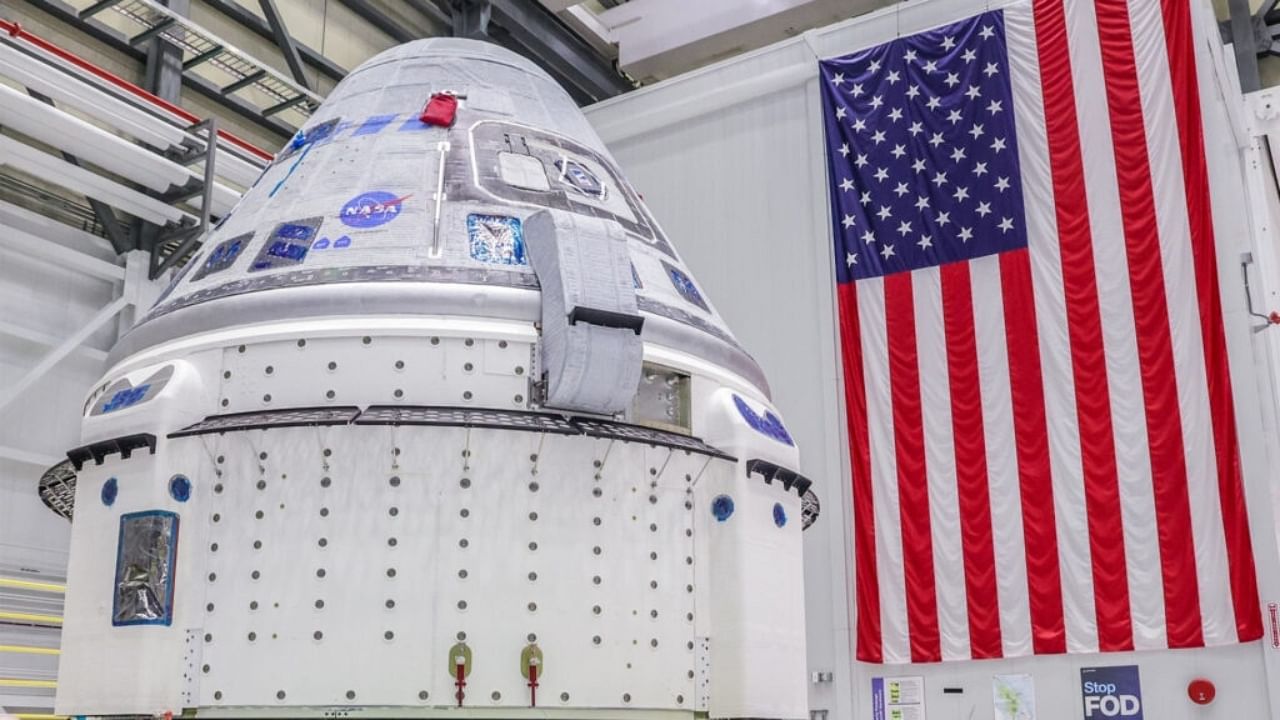
Officials from NASA and Boeing announced during a news conference Thursday that the Starliner spacecraft’s first crewed flight to the International Space Station, scheduled for July 21, had been delayed.
Two NASA astronauts, Suni Williams and Butch Wilmore, will have to wait months or longer for their test flight aboard the Starliner capsule. The decision came after engineers discovered two new problems with the Boeing spacecraft: an issue with its parachutes and potentially flammable tape that covers internal wiring.
The technical issues are the latest in a series of complications that for years have prevented an astronaut from flying aboard the capsule.
Why It Matters: NASA needs two rides to orbit
To get to and from the space station, NASA currently relies on SpaceX, the company founded by Elon Musk. SpaceX carried its first team of astronauts to orbit in May 2020, aboard its Crew Dragon capsule, and has since lifted eight more crews to the space station.
Also Read | ISRO’s twin win for India’s space sector
But NASA has also hired Boeing to build a capsule, so that one can serve as a backup if something goes wrong with the other.
“NASA desperately needs a second provider for crew transportation,” Steve Stich, the Commercial Crew Program manager at the agency, said during Thursday’s news conference.
Background: What came after the space shuttle program
NASA once relied on the space shuttle to carry astronauts to and from orbit. When those vehicles were retired in 2011, the agency had to rely on Russia’s Soyuz spacecraft, and did so for nearly a decade.
To restore its autonomy, the agency started a program, Commercial Crew, that would rely on private companies to build spacecraft that could transport astronauts on NASA missions. Moreover, NASA would become a customer of the companies, paying for rides on the vehicles rather than owning them outright as it did the space shuttles.
SpaceX is one of those providers, and Boeing was to be the other.
Boeing’s Starliner capsule has flown to orbit twice already with no astronauts aboard. The first flight, in December 2019, was intended to precede a flight with astronauts aboard. But a series of software errors in space imperiled the flight, leading NASA to label it a “high-visibility close-call” after an investigation.
A second uncrewed flight in May 2022 was more successful. But it was originally supposed to have occurred in August 2021. Before that flight, engineers found that valves in Starliner’s propulsion system were stuck, and the vehicle had to be recalled from the launchpad and sent back to the factory for repairs.
The technical problems have been a burden for Boeing, which has reported $883 million in losses on the vehicle through October.
But the company said it had no plans to abandon its bid to build Starliner.
“There’s growing pains in developing a vehicle and flying a vehicle — we’re really close,” said Mark Nappi, the vice president and program manager at Boeing for Starliner. “This is just part of the business to have these kinds of issues.”
What’s Next: Boeing and NASA will assess repairs
Stich said it was possible that the Starliner could visit the space station this fall but that it would depend on how quickly the problems with the parachutes and wiring could be resolved.
After reentering Earth’s atmosphere, the Starliner capsule returns to Earth gently under three parachutes. Engineers discovered that parts of the lines that connect the spacecraft to the parachutes could not tolerate the load from the capsule if only two of the three parachutes deployed properly. Boeing said in a statement that it anticipated doing parachute testing before another launch attempt would be scheduled.
The wiring problem involves the hundreds of feet of tape wrapped around Starliner’s internal wiring. In some scenarios, the tape adhesive could be flammable. Nappi said that engineers were considering putting another kind of wrapping around the tape in areas where the fire risk was greatest.
“You could say we’re disappointed because it means a delay,” Nappi said. “But the team is proud that we’re making the right choices.”